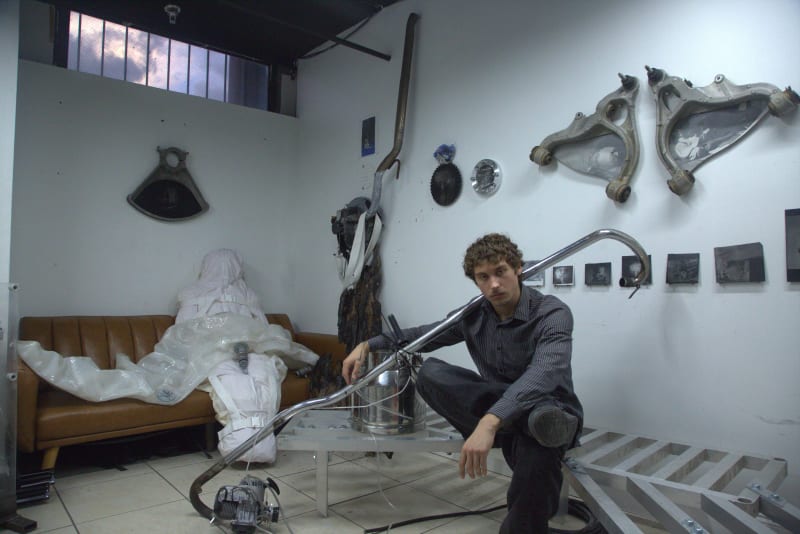Through performance, film, poetry, objects, and imagery, David Correa’s (b. 1999, Miami, FL) multi-faceted art practice paints surreal and elaborate narratives exploring and satirizing modern man’s existential relationship to the tool and the self.
Contextualized through collective aspects of Latin American situationism, Correa further informs these narratives by referencing political theory, mythology, art history, and philosophy, creating networks of ideologies which depict the Latin laborer as an absurdist figure. Through these systems of thought, Correa grounds the internal combustion engine as a focal point within his work. Industrialization has blurred the lines between operator and tool, and consequently, task and purpose. While actively exploring these relationships through his time-based work, Correa’s presentation of ephemera as sculpture furthers this investigation by humanizing and memorializing the tool. The equipment and garments utilized in Correa’s performances are presented as relics. Glass, steel, aluminum, plastics, and found objects become framing tools encasing and immortalizing the soiled garment, the wear of a machine, or the portrait of the laborer. Through this questioning of hierarchies, death and non-functionality become interchangeable.
Contextualized through collective aspects of Latin American situationism, Correa further informs these narratives by referencing political theory, mythology, art history, and philosophy, creating networks of ideologies which depict the Latin laborer as an absurdist figure. Through these systems of thought, Correa grounds the internal combustion engine as a focal point within his work. Industrialization has blurred the lines between operator and tool, and consequently, task and purpose. While actively exploring these relationships through his time-based work, Correa’s presentation of ephemera as sculpture furthers this investigation by humanizing and memorializing the tool. The equipment and garments utilized in Correa’s performances are presented as relics. Glass, steel, aluminum, plastics, and found objects become framing tools encasing and immortalizing the soiled garment, the wear of a machine, or the portrait of the laborer. Through this questioning of hierarchies, death and non-functionality become interchangeable.
